Hello science addicts! Today I noticed that my aquarium is growing some algae that I had never seen before, remember my post about the moss ball? that in reality it was a form of filamentous algae growth, in this case when observing the species that I extracted from the aquarium, I noticed that the growth also seems filamentous but I need to know what the species is to be able to eradicate them, some filamentous ones are not a problem and we can remove them mechanically "manually" I hope this is the case!🔬🧠👀
Hola adictos a la ciencia! hoy note que a mi acuario le esta creciendo unas algas que nunca habia visto, recuerdas mi post sobre la bola de musgo? que en realidad era una forma de crecimiento de algas filamentosas, en este caso al observar la especie que extraje del acuario note que el crecimiento parece tambien filamentoso pero necesito saber cual es la especie para poder erradicarlas, algunas filamentosas no son un problema y podemos removerlas mecanicamente "de forma manual" espero que este sea el caso!🧠👨🎓🍀

Species identification🙇♂️👨🏫/Identificacion de la especie🔬📚

For the identification of the species use the identification guide of "es.frwiki.wiki" we are in evidence of a species of green filamentous algae I think it is a Cladophora and when comparing with a specialist: "Tom Barr Barrreport.com "I also see a lot of similarities in the Cladophora and that it is also very common to appear in our aquariums! Now that we have identified our algae, let's learn a little more about its ecology and thus better understand why it grows uncontrollably in our aquarium!👨🏫🔬🍀
Para la identificacion de la especie utilice la guia de identificacion de "es.frwiki.wiki" estamos en evidencia de una especie de alga filamentosa verde yo creo que se trata de una Cladophora y al comparar con un especialista: "Tom Barr Barrreport.com" tambien veo mucha similitud en la Cladophora y que tambien es muy comun en aparecer dentro de nuestros acuarios! ahora que hemos identificado nuestra alga aprendamos un poco mas sobre su ecologia y asi conocer mejor el por que crece en nuestro acuario de forma descontrolada!📚🧠🙋♂️

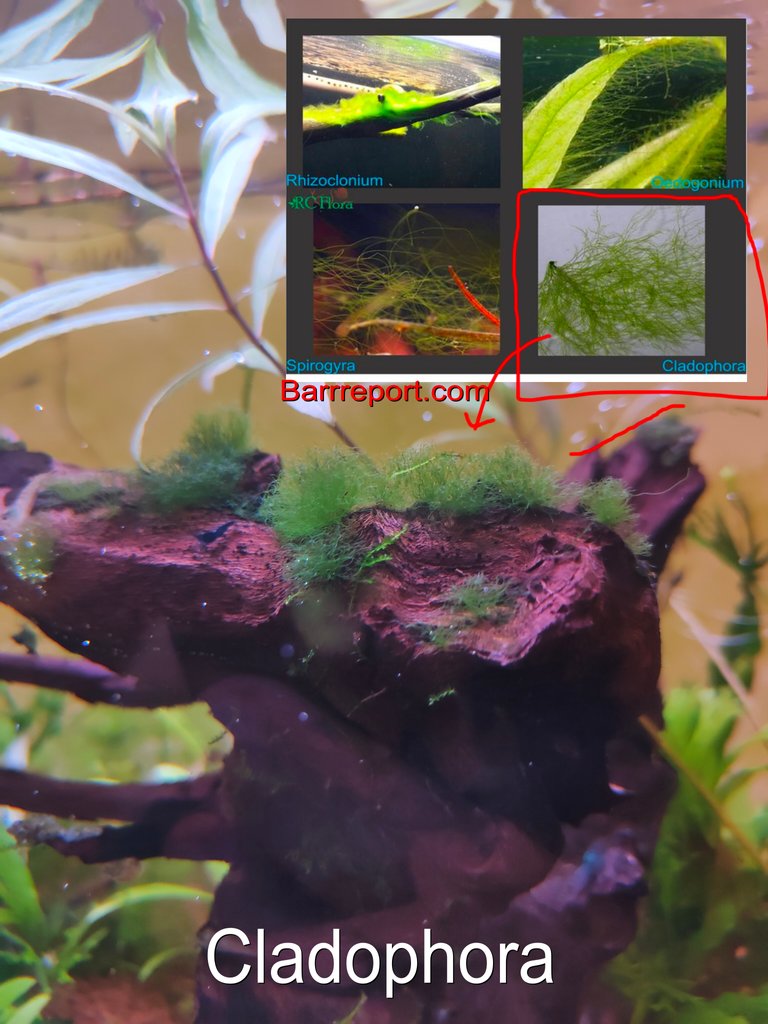
Investigating a little I read that identifying the species is quite difficult because they are very similar, so we will simply keep that it is a cladophora, this genus belongs to the Phylum: "Chlorophyta", which in turn are green algae with more than 8200 described species , they are mostly photosynthetic green aquatic! This already gives me a clue because when we exceed the lighting of the aquarium then we will be giving them space to proliferate in our aquarium!👀🤯
Investigando un poco leo que identificar la especie es bastante dificil porque son muy similares, asi que simplemente nos quedaremos con que es una cladophora, este genero pertenece al Filo: "Chlorophyta", que a su vez son algas verdes con mas de 8200 especies descritas, son acuaticas en su mayoria verdes fotosinteticas! ya esto me da una pista porque al excedernos con la iluminacion del acuario entonces les estaremos dando espacio para proliferar en nuestro acuario!👀🙋♂️🧠📚

Description🙇♂️👨🏫/Descripcion🔬📚
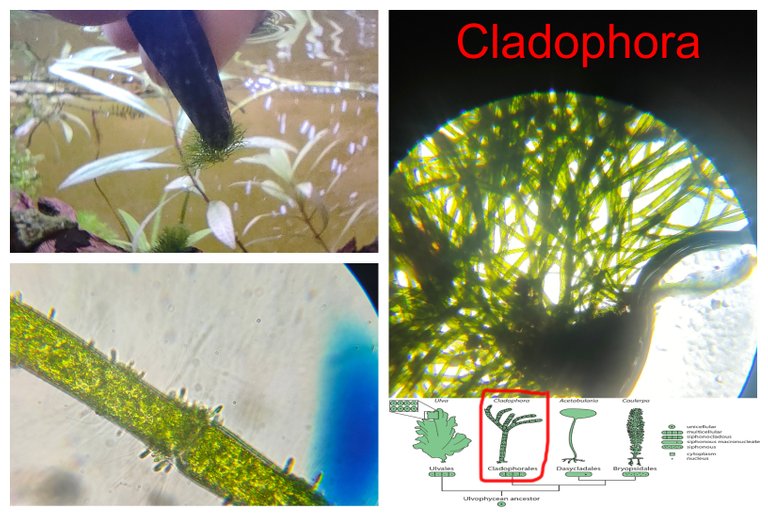
We can then define the cladophoras as "branched green algae" to the touch we can feel that they are resistant and rough algae, which gives them a level of resistance capable of resisting water currents, their form of growth is in "masses and compact as creating mosses". To identify a Cladophora we must take into account the habitat, age and morphology, which makes them very difficult to classify! They stand out because in their life cycle there are "haploid gametes and diploid sporophytes"👀🧠📚
Podemos definir entonces a las cladophoras como "algas verdes ramificadas" al tacto podemos sentir que son algas resistentes y asperas, lo que les confiere un nivel de resistencia capaces de resistir corrientes de agua, su forma de crecimiento es en "masas y compacta como creando musgos". Para identificar una Cladophora debemos tener en cuenta el habitat, edad y morfologia lo que las hace muy dificil de clasificar! se destacan por que en su ciclo de vida existe "gametos haploides y esporofitos diploides" 🤯🔬👨🏫

Why do they appear in aquariums?🙇♂️👨🏫/Por que aparecen en los acuarios?🔬📚

On one occasion I explained about the cladophoras but comparing this species with the one I got the first time I am a little more experienced in distinguishing them, my first observation being one: "Spirogyra", the main cause for the appearance of these filamentous algae are "uncontrolled levels of CO2 in the aquarium" as well as a low amount of nutrients for the plants in our aquarium!🤯
En una ocasion explique sobre las cladophoras pero comparando esta especie con aquella que consegui la primera vez soy un poco mas experimentado para distinguirlas siendo mi primera observacion una: "Spirogyra", la principal causa para aparecer estas algas filamentosas son "niveles descontrolados de CO2 en el acuario" asi como tambien baja cantidad de nutrientes para las plantas de nuestro acuario!👨🎓🧤🔬

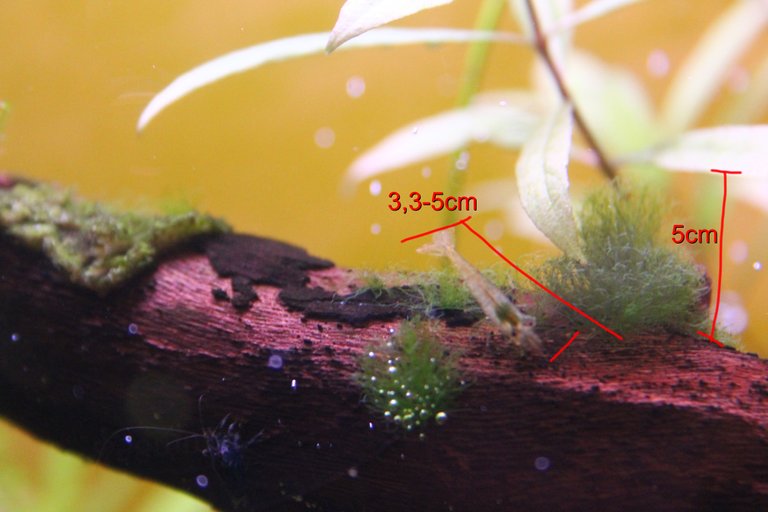
Compare the size of a Japanese shrimp to seaweed and they are almost the same size so this species of Cladophora would say a maximum of 5-8 centimeters! The most efficient way to remove them from our aquarium is to do it manually and very often, we can use a "tooth" brush to facilitate the task! We can also buy some species of algae eaters such as: "Gyrinocheilus", in conclusion when there is an imbalance in the aquarium they appear therefore it is important to measure our parameters and regularly make partial water changes!🤯👨🏫📚
Compare el tamaño de una gamba japonesa con la alga y son de casi el mismo tamaño por tanto esta especie de Cladophora diria que mide un maximo de 5-8 centimetros! la forma mas eficiente de eliminarlas de nuestro acuario es hacerlo manualmente y con mucha frecuencia, podemos usar un cepillo de "diente" para facilitar la tarea! tambien podemos comprar algunas especies de come algas tal es el caso de: "Gyrinocheilus", en conclusion cuando hay un desequilibrio en el acuario aparecen por tanto es importante ir midiendo nuestros parametros y hacer regularmente cambios de agua parciales!👀🔬🤯

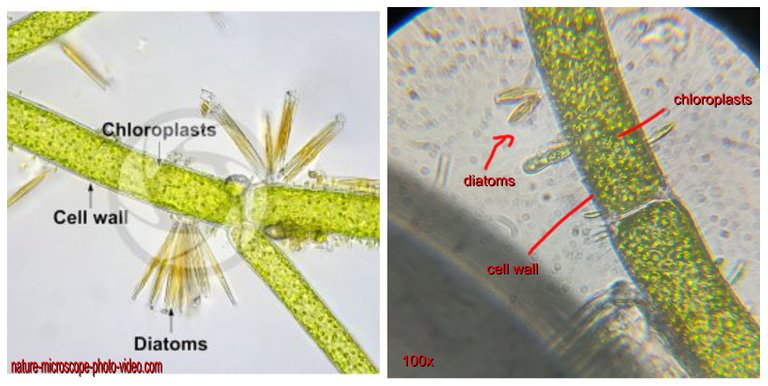
I think what most attracts our attention in the photo is to see diatoms that are also small unicellular algae attached to filamentous algae, actually diatoms are part of the ecosystem of our aquarium and are not a problem! On the contrary, they produce oxygen in exchange for CO2.👀📚👨🏫
Creo que lo que mas nos llama la atencion en la foto es ver diatomeas que tambien son pequeñas algas unicelulares unidas a las algas filamentosas, en realidad las diatomeas forman parte del ecosistema de nuestro acuario y no son ningun problema! al contrario producen oxigeno a cambio de CO2.🧠🌿🍀


Personally, I think that the main problem that these algae cause in our aquarium is to damage the aesthetics of our planting, since they grow uncontrollably on any surface, they can also grow as a cover and interfere with our filtration equipment!📚🤯
En lo personal creo que el problema principal que provocan estas algas en nuestro acuario es la de dañar la estetica de nuestro plantado, ya que crecen descontroladamente sobre cualquier superficie, tambien pueden crecer a modo de tapar e interferir en nuestro equipo de filtracion!😥🧠🔬
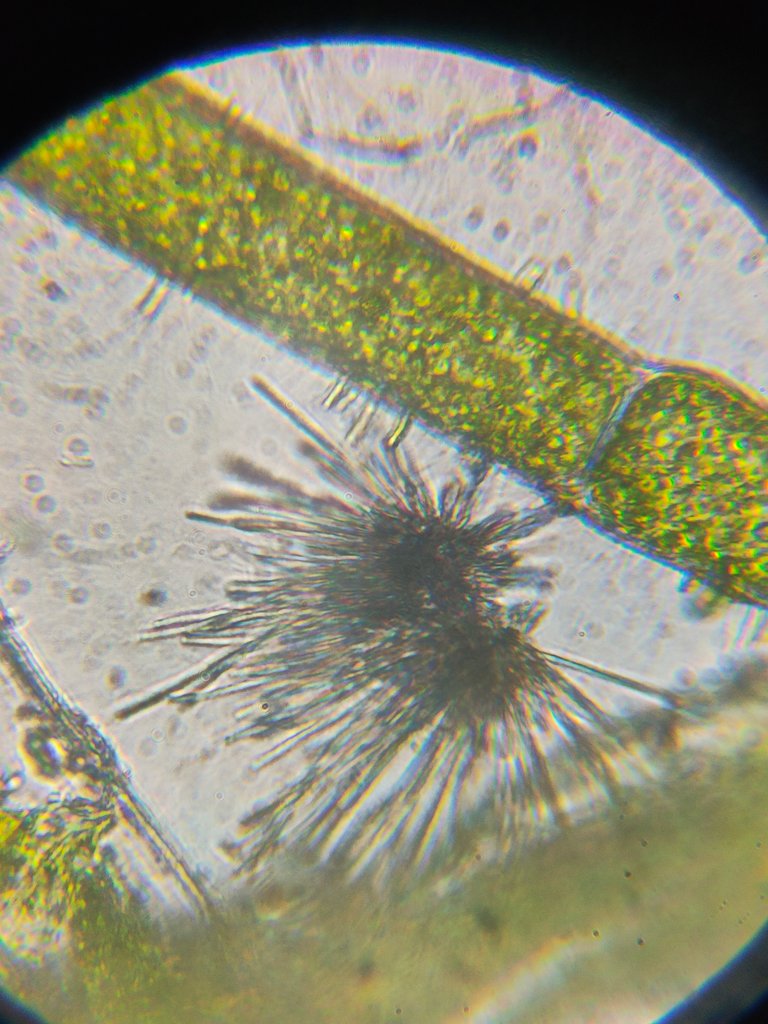


DNA is an organization to foster and DENSIFY NATURE-APPRECIATION which aims to establish REPORTS OF BIODIVERSITY DATA that is contributed by all of us Hiveans and subsequently cataloged.
Therefore DNA searches for HIGH-QUALITY posts that aim to DESCRIBE and determine the BIODIVERSITY AROUND YOU with added EXPLANATIONS and INFORMATION. For these informative posts they offer a CURATION SERVICE using the @dna.org account. It is also a CURATION TRAIL. Just add the #dna TAG if you think that any of your posts is what they are looking for.
GRACIAS POR LEERME / THANKS FOR READING ME /FOTOS DE MI PROPIEDAD / PHOTOS OF MY PROPERTY)🙂🧠🦾👍
Referencias bibliograficas / Sources:
The scientific information in this post is a mix between knowledge acquired in my profession and the references cited! for direct quotes use: ""
LEARN MORE ABOUT THIS GENRE / APRENDE MAS SOBRE ESTE GENERO:
https://ecency.com/hive-163521/@oscurity/cladophora-aegagropila-en-es
























